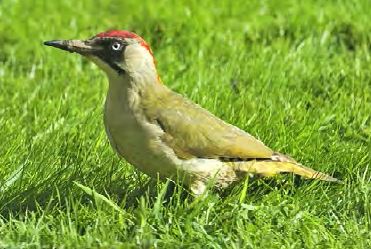Post Fourteen
Newts, toads and frog breed in this pond. Look for frogspawn and the long double strands of toadspawn wrapped around water plants. Female newts wrap each fertilised egg in a leaf so it is important that plants grow in the pond and along its edge. Look across the pond in spring to see marsh marigold in flower.
As you walk towards post 15 look for galls on young oak trees on your right. Inside them are the larvae of different species of tiny wasps.
If you are very lucky you may see a green woodpecker eating ants in the meadow beyond.
www.photographers-resource.co.uk/index.htm
Pass the barway. You are now in Little Wood. This is ancient woodland because it has been in existence for at least 400 years, but it is described as ‘semi-natural’ because during that time the trees were regularly harvested.
Little Wood consists mainly of oak trees with coppiced hazel below. The oak was allowed to grow tall; its timber was very valuable and used for ship building and construction. The hazel was harvested every 10-15 years and used for fencing, hurdle making, hedgelaying and long ago for making houses of wattle and daub. Although the trees were harvested, the soil remained relatively undisturbed for hundreds of years and therefore supports a very complex community of interdependent organisms including plants, fungi and very many tiny animals.



